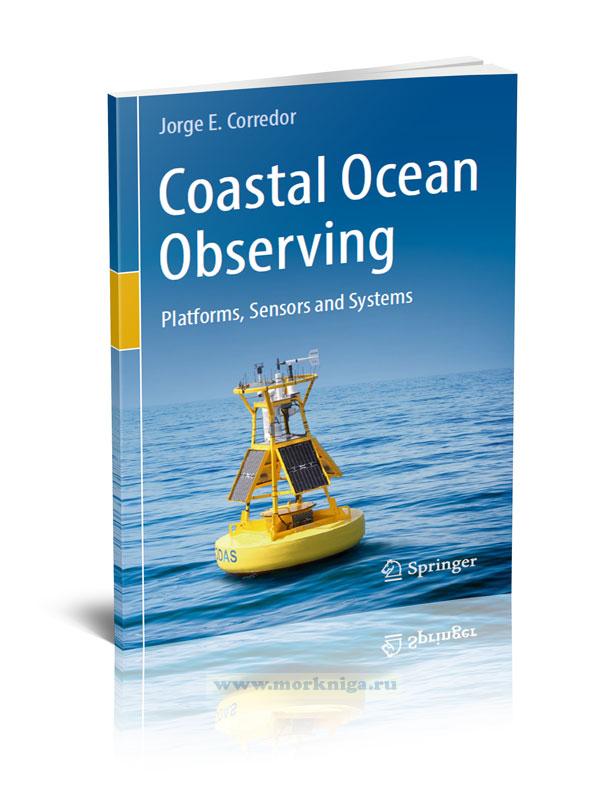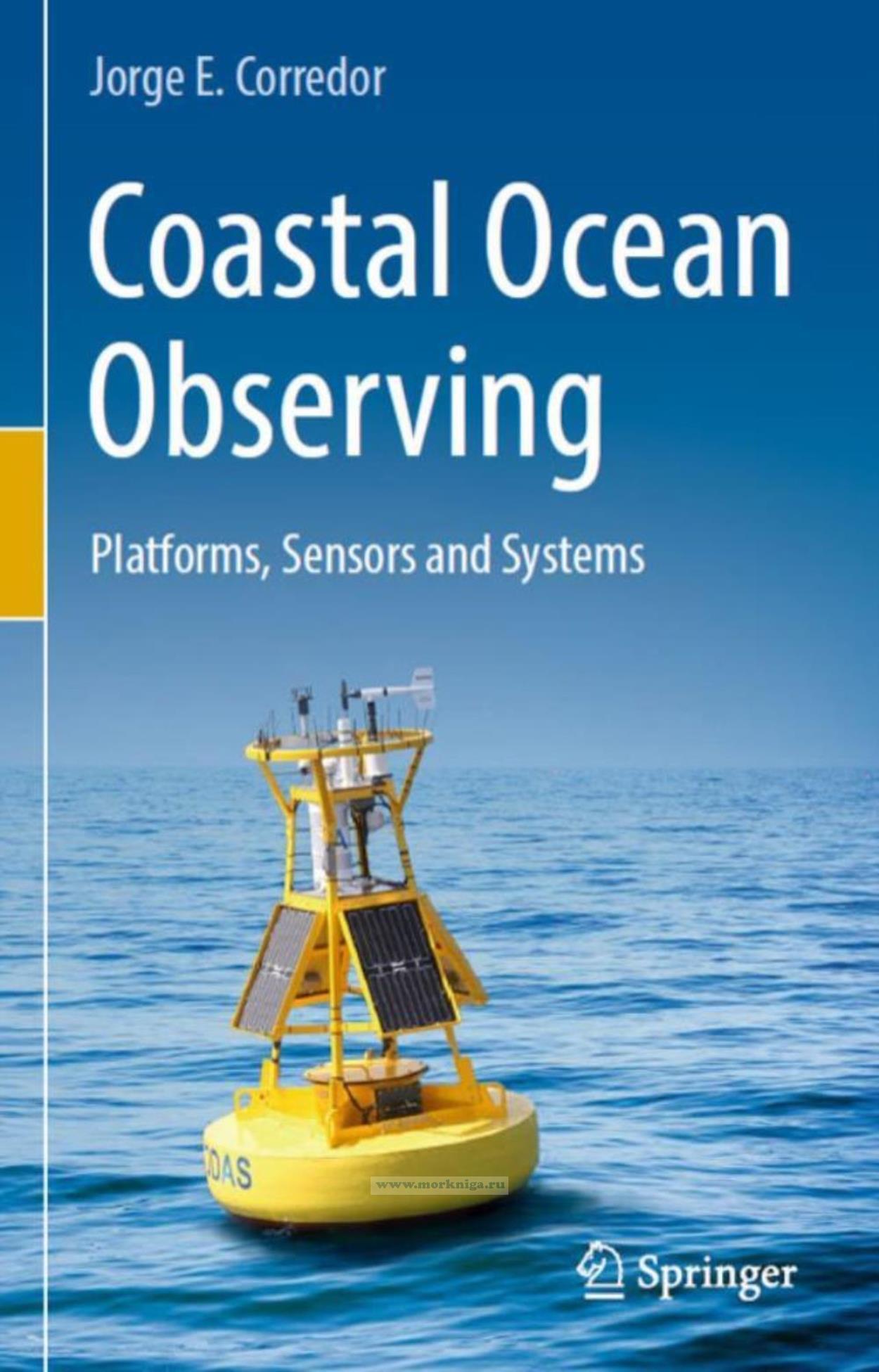Сб с 10 до 16
Coastal Ocean Observing. Platforms, Sensors and Systems/Наблюдение за прибрежным океаном. Платформы, датчики и системы
Книга на английском языке
This manual describes the wide range of electromechanical, electrochemical and electro-optical transducers at the heart of current field-deployable ocean observing instruments. Their modes of operation, precision and accuracy are discussed in detail. Observing platforms ranging from the traditional to the most recently developed are described, as are the challenges of integrating instrument suits to individual platforms. Technical approaches are discussed to address environmental constraints on instrument and platform operation such as power sources, corrosion, biofouling and mechanical abrasion. Particular attention is also given to data generated by the networks of observing platforms that are typically integrated into value-added data visualization products, including numerical simulations or models. Readers will learn about acceptable data formats and representative model products. The last section of the book is devoted to the challenges of planning, deploying and maintaining coastal ocean observing systems.
Readers will discover practical applications of ocean observations in diverse fields including natural resource conservation, commerce and recreation, safety and security, and climate change resiliency and adaptation. This volume will appeal to ocean engineers, oceanographers, commercial and recreational ocean data users, observing systems operators, and advanced undergraduate and graduate students in the field of ocean observing.
Contents
1 Introduction to Coastal Ocean Observing
References
2 Electronic Sensors and Instruments for Coastal
Ocean Observing
2.1 Transducer-Driven Instruments for Ocean Observing
2.2 Electronic Sensors and Instruments for Ocean Observing
2.2.1 Seawater Temperature
2.2.2 Seawater Pressure
2.2.3 Ocean Currents
2.2.4 Ocean Tides
2.2.5 Ocean Waves
2.2.6 Ocean Winds
2.2.7 Light in the Sea
2.3 Electrochemical Sensors for Coastal Ocean Observing
2.3.1 Seawater Salinity
2.3.2 Dissolved Oxygen in Seawater
2.3.3 The Inorganic Carbon System and pH in Seawater
2.3.4 Inorganic Nutrients Dissolved in Seawater
2.4 Electro-Optical Sensors for Measurement of Organic Matter
in Seawater
2.4.1 Colored Dissolved Organic Matter in Seawater
2.4.2 Sensing and Tracking Petroleum Pollution
in the Marine Environment 2.5 Sensors for Biological Compounds and Processes: Chlorophyll,
Accessory Pigments, and Photosynthetic Activity
2.5.1 In Vitro/In Vivo Chlorophyll Fluorometry
2.5.2 Automated Sell Sorting, Counting, and Bio-optical
Characterization
2.5.3 Remote Sensing of Photosynthetic Pigments
References
3 Platforms for Coastal Ocean Observing
3.1 Fixed Ocean Observing Platforms
3.1.1 Land-Based Ocean Observing Platforms
3.1.2 Ocean-Based Ocean Observing Platforms
3.2 Mobile Ocean Observing Platforms
3.2.1 Manned Vessels and Shipboard Deployed Vehicles
3.2.2 Lagrangian Drifters
3.2.3 Autonomous Surface Vehicles
3.2.4 Underwater Gliders
3.3 Ocean Observing Satellites in Terrestrial Orbit
References
4 Environmental Constraints to Instrumental Ocean Observing:
Power Sources, Hydrostatic Pressure, Metal Corrosion,
Biofouling, and Mechanical Abrasion
4.1 Power Supplies for Autonomous Coastal Ocean Observing
Platforms and Instrument Payloads
4.2 Ocean Observing Instrument Mounts and Housings
4.3 Metal Corrosion Considerations Pertinent to Ocean
Observing
4.3.1 Fundamentals of Electrochemistry
4.3.2 Electrochemistry of Metals in Seawater
4.3.3 Metal Corrosion in Seawater
4.3.4 Corrosion Protection
4.4 Biofouling of Ocean Observing Instruments and Platforms
4.5 Mechanical Abrasion of Ocean Observing Platform
Components
References
5 Signal Conditioning, Data Telemetry, Command Signaling and Platform Positioning in Ocean Observing
5.1 Data Signal Conditioning for Ocean Observing
5.2 Electromagnetic Data Transmission for Coastal
Ocean Observing
5.2.1 Satellites in Terrestrial Orbit as Communication
Platforms
5.2.2 Cellular Network Data Transmission for Coastal
Ocean Observing
5.2.3 Cable Connections for Coastal Ocean Observing
5.3 Acoustic Data Links for Coastal Ocean Observing
5.4 Satellite-Aided and Autonomous Underwater Navigation for Ocean Observing
References
6 Numerical Models for Operational Ocean Observing
6.1 Constraints to Spatial and Temporal Resolution of Ocean
Observing Models
6.2 Physical Models for Operational Ocean Observing
6.2.1 Ocean General Circulation Models for Operational
Ocean Observing
6.2.2 Coastal Ocean Hydrodynamic Models
6.3 Coastal Ocean Wave Models
6.4 Lagrangian Tracking for Spill Response and Search and Rescue
6.5 Chemical Models for Coastal Ocean Observing
6.6 Biological Models for Coastal Ocean Observing
References
7 Coastal Ocean Observing Data Quality Assurance and Quality
Control, Data Validation, Databases, and Data Presentation
7.1 Introduction
7.2 Quality Assurance and Quality Control (QA/QC) for In Situ
Ocean Observing Data
7.3 Experimental Validation of Remote Sensing and Ocean
Model Output Data
7.4 Ocean Observing Databases
7.5 Ocean Observing Data Visualization for Environmental
Awareness
References
8 Planning, Implementation, and Operation of Coastal Ocean
Observing Systems
8.1 Ocean Observing Data Needs Assessment 8.2 Planning Coastal Ocean Observing Systems
8.2.1 Instrument and Platform Selection
8.2.2 Platform Site Selection and Regulatory Constraints138
8.2.3 Selection, Sub-sampling, and Optimization of Satellite Imagery
8.2.4 Selection and Design of Numerical Model
Implementations 8.3 Deployment and Maintenance of Ocean Observing Platforms in the Coastal Zone
8.3.1 Buoy Deployment and Maintenance
8.3.2 High Frequency Radar Deployment and Maintenance
8.3.3 Glider Deployment and Recovery
8.4 Partnerships in Coastal Ocean Observing
8.5 Applied and Scientific Research in Coastal Ocean
Observing
References
Afterword
Index

